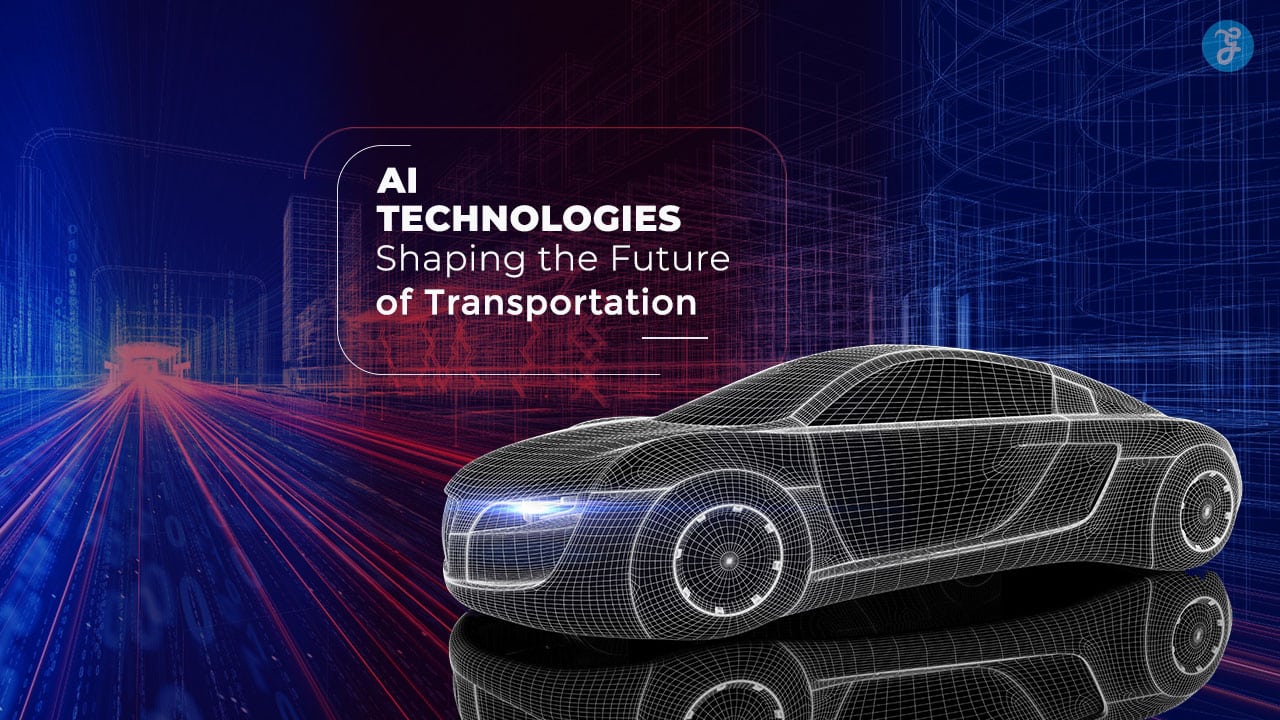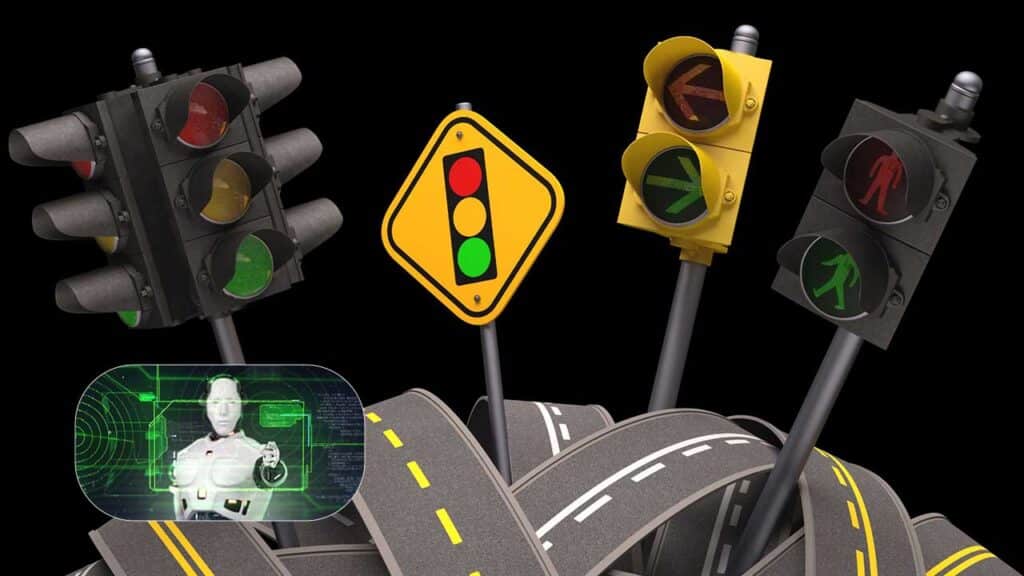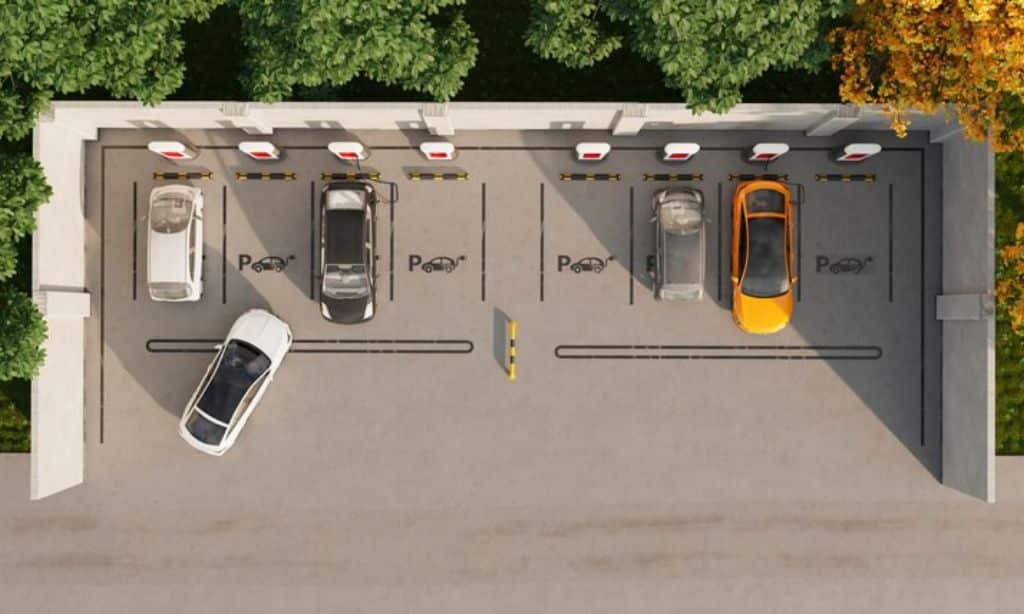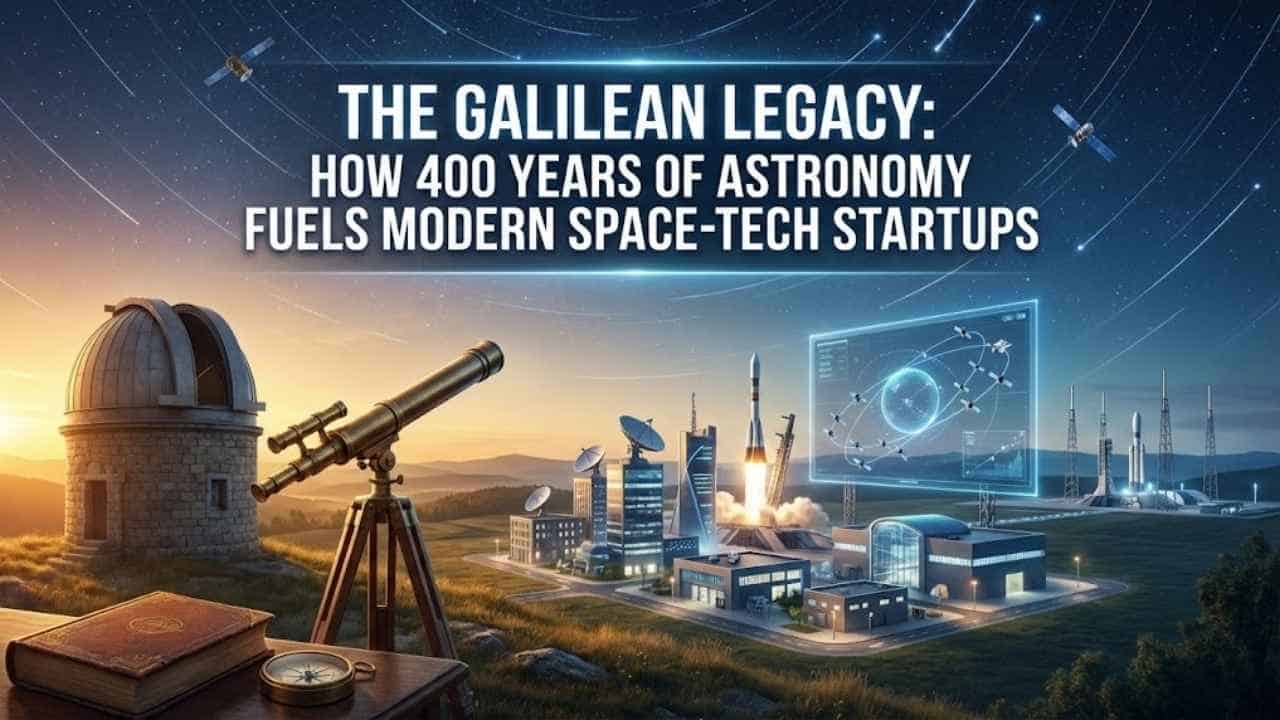The transportation industry is undergoing a dramatic transformation thanks to artificial intelligence (AI). From autonomous vehicles to smart traffic management systems, AI technologies are making transportation safer, more efficient, and environmentally friendly.
These innovations are not just futuristic concepts but are actively shaping how we move goods and people across the globe.
With AI at the helm, transportation systems are becoming smarter, offering solutions to long-standing challenges like congestion, emissions, and inefficiencies. In this article, we’ll explore 20 AI technologies that are redefining transportation.
These innovations span across various domains, including autonomous driving, logistics, urban mobility, and beyond.
Why AI is Critical in Transportation
AI is a game-changer for transportation. Here’s why:
- Efficiency: AI algorithms optimize routes, manage traffic, and reduce travel time.
- Safety: Autonomous systems powered by AI minimize human errors, which cause most accidents.
- Sustainability: AI enables eco-friendly solutions like energy-efficient logistics and electric vehicle management.
- Cost Savings: By automating processes, AI reduces operational costs for transportation companies.
The integration of AI into transportation is more than just a technological advancement—it’s a necessity for a rapidly evolving world.
1. Autonomous Vehicles
Autonomous vehicles (AVs) represent a groundbreaking leap in transportation, promising to transform how we commute and deliver goods.
These vehicles leverage cutting-edge AI technologies like machine learning, computer vision, and advanced sensor systems (e.g., LiDAR, radar, and cameras) to navigate complex environments without human intervention. By analyzing real-time data from their surroundings, autonomous vehicles make split-second decisions to ensure safety and efficiency.
The technology is advancing rapidly, with companies like Tesla, Waymo, and General Motors spearheading innovations. Autonomous vehicles are poised to reduce traffic accidents—93% of which are caused by human error—while providing mobility to individuals who cannot drive, such as the elderly or disabled.
Beyond personal transport, autonomous trucks are revolutionizing logistics by enabling round-the-clock operations, thereby optimizing supply chains and reducing costs.
However, challenges like regulatory approval, infrastructure upgrades, and public trust must be addressed to unlock their full potential.
Key Features
- Sensors and Perception: Use of LiDAR, radar, and cameras for 360-degree awareness.
- Decision-Making Algorithms: AI interprets data to choose the safest actions.
- Connectivity: Integration with smart infrastructure for seamless operations.
Impact on Transportation
Autonomous vehicles are reducing traffic accidents, increasing mobility for those unable to drive, and optimizing ride-sharing services. Companies like Tesla, Waymo, and Cruise are leading this revolution.
| Feature | Details |
| Example Companies | Tesla, Waymo, Cruise |
| Applications | Ride-sharing, logistics, public transit |
| Challenges | Regulation, public trust, high costs |
2. AI-Powered Traffic Management Systems
AI-powered traffic management systems are critical for modern cities grappling with congestion and rising vehicle volumes. These systems utilize real-time data from sensors, cameras, and GPS devices to analyze traffic patterns and optimize traffic flow.
Predictive analytics and machine learning models anticipate peak congestion times, allowing authorities to adjust traffic light timings dynamically. For instance, cities like Singapore have implemented AI-driven systems to improve vehicular movement, leading to significant reductions in commute times and emissions.
These systems are also equipped to detect incidents such as accidents or roadblocks and can automatically dispatch emergency services to mitigate delays.
By integrating these technologies into urban planning, governments can ensure smoother commutes, improve road safety, and reduce the environmental impact of traffic congestion.
Key Features
- Predictive Analytics: AI predicts traffic patterns to prevent bottlenecks.
- Dynamic Signal Control: Adjusts traffic light timing based on real-time conditions.
- Incident Detection: AI identifies accidents and dispatches emergency services quickly.
Impact on Transportation
These systems are transforming urban mobility by reducing commute times, lowering emissions, and improving safety. Cities like Singapore and Los Angeles are already using AI for smarter traffic management.
| Feature | Details |
| Technology Used | Machine learning, IoT, predictive analytics |
| Applications | Urban traffic, highway management |
| Benefits | Reduced congestion, eco-friendly travel |
3. Predictive Maintenance in Transportation
Predictive maintenance is revolutionizing how vehicles and transportation infrastructure are maintained. Traditionally, maintenance follows a reactive or scheduled model, which often leads to unexpected failures or unnecessary costs.
AI-powered predictive maintenance uses data collected from sensors embedded in vehicles and infrastructure to monitor performance in real-time.
Machine learning algorithms analyze this data to identify potential issues, such as worn-out components or system malfunctions, before they escalate into critical failures. Industries ranging from aviation to rail and logistics benefit from this proactive approach.
Airlines, for example, use predictive maintenance to reduce flight delays caused by technical issues, while railway operators ensure smoother journeys by preempting track or train faults. This technology not only minimizes downtime but also enhances safety and extends the lifespan of assets.
Key Features
- Real-Time Monitoring: Sensors collect data on vehicle performance.
- Machine Learning Models: AI predicts failures based on historical data.
- Proactive Repairs: Alerts operators to take preventive actions.
Impact on Transportation
By reducing downtime and repair costs, predictive maintenance enhances fleet efficiency and safety. Airlines, railways, and logistics companies benefit significantly from this technology.
| Feature | Details |
| Examples | Aircraft maintenance, railway systems |
| Key Benefits | Lower costs, improved reliability |
| Challenges | High initial setup costs |
4. AI in Route Optimization
AI in route optimization is streamlining transportation by identifying the fastest, most efficient paths for vehicles. Whether it’s for delivery trucks, ride-sharing services, or public transit, AI algorithms analyze real-time data on traffic, weather, and road conditions to adapt routes dynamically.
This results in reduced travel times, lower fuel consumption, and improved customer satisfaction. Logistics companies like FedEx and UPS heavily rely on route optimization to meet tight delivery timelines while minimizing costs.
AI-driven route planning also plays a crucial role in ride-sharing platforms like Uber and Lyft, where it ensures that drivers and riders are matched efficiently. By enabling smarter navigation, route optimization significantly contributes to sustainable transportation by lowering emissions and conserving energy.
Key Features
- Dynamic Routing: Adapts routes in real-time based on conditions.
- Data Integration: Combines data from GPS, traffic sensors, and weather forecasts.
- Energy Efficiency: Minimizes fuel consumption and travel time.
Impact on Transportation
Route optimization benefits logistics companies, ride-hailing services, and public transit systems by reducing operational costs and improving punctuality.
| Feature | Details |
| Technology Used | AI, IoT, real-time data analytics |
| Applications | Freight, public transit, ride-sharing |
| Benefits | Cost savings, reduced emissions |
5. AI-Powered Logistics and Supply Chain Management
AI is transforming logistics and supply chain management, making operations faster, smarter, and more reliable. From demand forecasting to automated warehousing, AI-powered tools optimize every stage of the supply chain.
Predictive analytics enable companies to anticipate consumer demand, reducing overstocking or stockouts. Robots and AI in warehouses streamline inventory management, ensuring timely restocking and order fulfillment.
For last-mile delivery, AI assists in dynamic scheduling, determining the best delivery routes to minimize delays and costs. Companies like Amazon, DHL, and Alibaba use AI extensively to enhance customer satisfaction and reduce operational inefficiencies.
In an era of growing e-commerce, AI is the backbone of seamless logistics and a key driver of competitive advantage.
Key Features
- Demand Forecasting: Predicts consumer demand to avoid overstocking or shortages.
- Automated Warehousing: Robots and AI streamline inventory management.
- Dynamic Delivery Scheduling: AI ensures timely deliveries.
Impact on Transportation
AI-powered logistics improve efficiency, reduce costs, and enhance customer satisfaction. Companies like Amazon and DHL are leading adopters of these technologies.
| Feature | Details |
| Technology Used | Robotics, machine learning |
| Applications | E-commerce, freight, last-mile delivery |
| Benefits | Faster delivery, reduced costs |
6. AI in Ride-Sharing Services
Ride-sharing platforms like Uber, Lyft, and Grab owe much of their success to AI technologies. These systems predict rider demand, ensuring that drivers are strategically positioned in high-demand areas.
AI also determines dynamic pricing, balancing supply and demand during peak times while maximizing driver earnings. The use of machine learning algorithms enables real-time route optimization, allowing drivers to pick up and drop off passengers with minimal delays.
Additionally, AI plays a significant role in safety features, such as monitoring driver behavior to prevent accidents. As cities grow more congested, AI-powered ride-sharing platforms contribute to reducing traffic by promoting carpooling and efficient vehicle use.
Key Features
- Demand Prediction: AI forecasts high-demand areas, allowing drivers to position themselves strategically.
- Dynamic Pricing: Algorithms adjust pricing based on demand and supply.
- Route Optimization: Suggests the fastest and most cost-effective routes for drivers.
Impact on Transportation
Ride-sharing platforms have become integral to urban mobility, reducing the reliance on personal vehicles. AI ensures a seamless experience for riders while maximizing drivers’ earnings.
| Feature | Details |
| Technology Used | Machine learning, GPS, big data |
| Applications | Urban mobility, carpooling |
| Benefits | Cost efficiency, reduced traffic |
7. Smart Parking Systems
Parking is a persistent challenge in urban areas, and smart parking systems offer a viable solution. Using AI and IoT technologies, these systems identify available parking spots and guide drivers through mobile apps or in-car navigation systems.
Advanced versions integrate dynamic pricing models, adjusting fees based on demand to encourage efficient parking turnover. AI also helps manage parking enforcement by detecting violations and issuing penalties automatically.
Cities like San Francisco and Singapore have implemented smart parking systems, significantly reducing the time drivers spend searching for spaces. By cutting down idling and unnecessary driving, these systems not only improve convenience but also contribute to environmental sustainability.
Key Features
- Sensor Integration: Monitors parking space occupancy.
- Mobile App Assistance: Guides users to the nearest available parking spots.
- Dynamic Pricing: Adjusts parking rates based on demand.
Impact on Transportation
Smart parking systems reduce traffic caused by drivers searching for spaces, saving time and fuel. These systems are already implemented in cities like Singapore and San Francisco.
| Feature | Details |
| Technology Used | IoT, real-time analytics |
| Applications | Urban parking, smart city initiatives |
| Benefits | Reduced congestion, lower emissions |
8. AI for Public Transit Optimization
Public transit systems are increasingly adopting AI to enhance efficiency, reliability, and user experience. AI-driven models analyze passenger flow data, traffic patterns, and even weather conditions to optimize bus and train schedules.
For instance, dynamic routing adjusts transit routes in real-time to avoid delays or accommodate surges in passenger demand.
AI also supports fare collection and ticketing systems, making them seamless and contactless. In cities like London and Tokyo, AI ensures public transit operates smoothly during peak hours, offering commuters a reliable alternative to private vehicles.
By improving service quality, AI-powered public transit contributes to reducing urban congestion and pollution.
Key Features
- Predictive Analytics: Anticipates peak travel times and adjusts schedules.
- Dynamic Routing: Reroutes buses or trains based on real-time data.
- Passenger Assistance: Chatbots and virtual assistants provide route and schedule information.
Impact on Transportation
AI-driven public transit systems make commuting more reliable and user-friendly. Cities like London and Tokyo have implemented AI to improve service efficiency.
| Feature | Details |
| Technology Used | AI, IoT, real-time monitoring |
| Applications | Urban transit, rail systems |
| Benefits | Enhanced reliability, passenger satisfaction |
9. Drone Delivery Systems
Drones are revolutionizing last-mile delivery, offering faster and more efficient alternatives to traditional methods. AI-powered drones navigate autonomously, leveraging machine learning for obstacle detection and route optimization.
Companies like Amazon, Zipline, and DHL are already using drones to deliver parcels, medical supplies, and groceries. In remote areas or disaster zones, drones provide critical lifelines by reaching locations that are inaccessible to conventional vehicles.
Real-time tracking features enhance customer experience, while reduced reliance on road transportation lowers carbon footprints. As drone technology advances, it promises to play a pivotal role in sustainable and efficient logistics.
Key Features
- Autonomous Navigation: AI ensures precise and safe flight paths.
- Obstacle Avoidance: Detects and avoids obstacles during delivery.
- Real-Time Tracking: Allows customers to monitor deliveries in real-time.
Impact on Transportation
Drone deliveries save time, reduce traffic congestion, and lower carbon emissions. They are particularly useful in remote or disaster-hit areas.
| Feature | Details |
| Technology Used | AI, GPS, computer vision |
| Applications | E-commerce, medical supply delivery |
| Benefits | Speed, eco-friendliness, accessibility |
10. Autonomous Shipping
Autonomous shipping is transforming the maritime industry by enabling vessels to navigate and operate with minimal human intervention. These ships are equipped with advanced AI algorithms, GPS systems, and sensors that allow them to detect obstacles, optimize routes, and monitor fuel efficiency.
Autonomous shipping reduces the risks associated with human error, a leading cause of maritime accidents. Companies like Rolls-Royce and Wärtsilä are at the forefront of developing self-piloted cargo ships, which are already being tested in regions like Scandinavia and Japan.
Beyond navigation, AI helps streamline port operations by automating docking procedures and improving cargo handling. By reducing crew requirements and fuel consumption, autonomous ships contribute to more sustainable and cost-effective global trade.
Key Features
- Remote Monitoring: Allows operators to track ship performance from shore.
- Route Optimization: AI selects the most fuel-efficient routes.
- Collision Avoidance: Sensors and AI prevent accidents at sea.
Impact on Transportation
Autonomous shipping is expected to revolutionize global trade, making shipping safer, faster, and more cost-effective. Companies like Rolls-Royce and Wärtsilä are at the forefront of this technology.
| Feature | Details |
| Technology Used | AI, GPS, IoT |
| Applications | Cargo transport, supply chain |
| Benefits | Safety, efficiency, reduced emissions |
11. AI in Air Traffic Control
Air traffic control (ATC) is a high-stakes domain where even minor delays can cascade into major disruptions. AI enhances ATC operations by processing vast amounts of data to optimize flight paths, predict congestion, and improve safety.
Predictive analytics powered by AI anticipate weather-related disruptions and adjust flight schedules to minimize delays. Machine learning models identify potential collisions and deviations, allowing controllers to act proactively.
AI also plays a role in automating routine tasks, such as scheduling runway use and managing ground traffic, enabling human operators to focus on more critical decisions. As the aviation industry grows, AI-driven ATC systems will ensure smoother and safer skies.
Key Features
- Predictive Analytics: Identifies potential delays and suggests solutions.
- Collision Avoidance: Monitors aircraft positions to prevent accidents.
- Dynamic Flight Routing: Adjusts routes based on weather and airspace conditions.
Impact on Transportation
AI-driven air traffic control ensures smoother and safer air travel. It reduces delays and improves the overall efficiency of the aviation industry.
| Feature | Details |
| Technology Used | Machine learning, radar systems |
| Applications | Commercial aviation, air cargo |
| Benefits | Enhanced safety, efficiency |
12. AI in Electric Vehicle (EV) Management
The rapid adoption of electric vehicles (EVs) has created new challenges, from managing charging infrastructure to optimizing energy consumption.
AI addresses these challenges by providing intelligent solutions for battery management, route planning, and energy efficiency. Smart battery management systems monitor usage patterns and recommend charging schedules to prolong battery life.
AI also plays a key role in integrating EVs into smart grids, ensuring that charging stations operate efficiently without overloading the power grid. Companies like Tesla and Rivian are leveraging AI to enhance EV performance and user experience. With its ability to optimize energy usage and reduce range anxiety, AI is essential for accelerating the global shift toward electric mobility.
Key Features
- Battery Management Systems: AI monitors and optimizes battery health and charging cycles.
- Smart Charging Stations: AI integrates charging with grid demand, avoiding peak usage.
- Route Planning: Ensures EVs can complete journeys with available charging stops.
Impact on Transportation
AI-powered EV management reduces range anxiety and promotes the seamless adoption of electric mobility. Companies like Tesla, Rivian, and ChargePoint leverage AI to enhance EV usability and infrastructure.
| Feature | Details |
| Technology Used | Machine learning, IoT, predictive analytics |
| Applications | EV manufacturing, charging infrastructure |
| Benefits | Extended battery life, reduced energy costs |
13. AI in High-Speed Rail Systems
High-speed rail systems represent the pinnacle of efficient mass transit, and AI is making them faster, safer, and more reliable. In countries like Japan and China, AI ensures the smooth operation of bullet trains by optimizing schedules, monitoring infrastructure, and managing passenger flows.
Predictive maintenance systems powered by AI detect potential issues with tracks or train components before they cause disruptions. AI also improves energy efficiency by adjusting train speeds and power usage based on real-time conditions.
For passengers, AI enables seamless ticketing and personalized travel recommendations. By integrating these technologies, high-speed rail is setting new benchmarks for sustainable and efficient transportation.
Key Features
- Predictive Maintenance: Detects infrastructure issues before they disrupt services.
- Passenger Flow Management: AI forecasts and manages peak travel periods.
- Energy Optimization: Adjusts train speed and power usage for efficiency.
Impact on Transportation
AI in high-speed rail reduces delays, enhances safety, and offers a more reliable travel experience. It is pivotal in meeting the growing demand for sustainable mass transit.
| Feature | Details |
| Technology Used | AI, IoT, predictive analytics |
| Applications | Passenger rail, freight rail |
| Benefits | Safety, efficiency, reduced emissions |
14. Autonomous Public Transit Systems
Autonomous public transit systems, including self-driving buses, trams, and shuttles, are redefining urban mobility. These systems rely on AI to navigate routes, monitor traffic conditions, and ensure passenger safety.
Cities like Singapore and Dubai are already piloting autonomous buses to reduce operational costs and improve accessibility. AI enables these vehicles to adapt to real-time changes, such as detours or traffic congestion, ensuring a smooth commute for passengers.
Additionally, autonomous public transit integrates seamlessly with smart city infrastructure, offering a connected and efficient transportation ecosystem. By reducing dependence on human drivers, these systems promise to make public transit more reliable and scalable.
Key Features
- Autonomous Navigation: AI enables self-driving capabilities for public transit vehicles.
- Integrated Scheduling: Ensures buses and trains operate efficiently and on time.
- Real-Time Monitoring: Tracks vehicle performance and passenger load.
Impact on Transportation
Autonomous public transit systems are already in testing or operational phases in cities like Singapore and Dubai. They promise reduced operational costs and a safer travel experience for commuters.
| Feature | Details |
| Technology Used | AI, GPS, computer vision |
| Applications | Urban transit, shuttle services |
| Benefits | Safety, cost efficiency, accessibility |
15. Intelligent Traffic Cameras
Intelligent traffic cameras are revolutionizing road safety and traffic management. These AI-powered systems use computer vision and machine learning to monitor traffic flow, detect violations, and identify potential hazards.
Advanced cameras can recognize license plates, monitor vehicle speeds, and even detect driver behaviors such as texting or not wearing seat belts. This data is used to enforce traffic laws and design safer roads.
In cities like London and Beijing, intelligent cameras play a pivotal role in reducing accidents and congestion. By providing real-time insights into road conditions, these systems enable smarter urban planning and contribute to safer, more efficient transportation networks.
Key Features
- License Plate Recognition: AI tracks vehicles for law enforcement and toll collection.
- Incident Detection: Identifies accidents and obstructions in real-time.
- Traffic Flow Analysis: Provides data to optimize traffic signals.
Impact on Transportation
Intelligent traffic cameras improve road safety and reduce congestion. Cities like London and Singapore have successfully implemented these systems for better traffic management.
| Feature | Details |
| Technology Used | Computer vision, machine learning |
| Applications | Urban traffic management, law enforcement |
| Benefits | Improved safety, reduced congestion |
16. AI in Predictive Demand for Transportation Services
AI in predictive demand forecasting is transforming how transportation services operate. By analyzing historical data, weather patterns, and real-time inputs, AI predicts when and where demand for transportation will peak.
Ride-sharing platforms like Uber and Lyft use this technology to allocate drivers effectively, reducing passenger wait times. Public transit operators rely on predictive demand models to adjust schedules and deploy additional buses or trains during busy hours.
This technology also benefits logistics companies by anticipating delivery volumes and optimizing fleet deployment. Predictive demand forecasting ensures that resources are utilized efficiently, enhancing customer satisfaction while minimizing operational costs.
Key Features
- Demand Forecasting: Identifies peak usage times and locations.
- Resource Allocation: Matches supply with predicted demand.
- Dynamic Scheduling: Adjusts transit schedules based on real-time data.
Impact on Transportation
Predictive demand systems improve service efficiency and customer satisfaction while reducing operational costs. They are particularly useful in managing urban mobility during major events or peak hours.
| Feature | Details |
| Technology Used | AI, big data analytics |
| Applications | Ride-sharing, public transit |
| Benefits | Reduced wait times, cost efficiency |
17. AI for Urban Air Mobility (UAM)
Urban Air Mobility (UAM) represents a futuristic approach to short-distance urban travel, leveraging AI to enable flying taxis and drones. These systems use AI for autonomous navigation, traffic coordination, and real-time decision-making.
By analyzing air traffic, weather conditions, and obstacle data, AI ensures that UAM vehicles operate safely and efficiently. Companies like Volocopter and Joby Aviation are pioneering this technology, with plans to integrate it into urban landscapes as a solution to road congestion.
UAM holds the potential to reduce commute times dramatically, particularly in densely populated cities. While still in development, this technology is poised to redefine urban transportation by introducing a new dimension of mobility.
Key Features
- Autonomous Navigation: AI enables self-piloting for flying vehicles.
- Traffic Coordination: Manages airspace for multiple UAM vehicles.
- Energy Efficiency: Optimizes battery usage for electric-powered vehicles.
Impact on Transportation
UAM technologies are still in development but hold immense potential for transforming urban mobility. Companies like Volocopter and Joby Aviation are leading in this space.
| Feature | Details |
| Technology Used | AI, IoT, GPS |
| Applications | Flying taxis, drone logistics |
| Benefits | Faster commutes, reduced ground traffic |
18. AI in Maritime Logistics
AI is revolutionizing maritime logistics by streamlining port operations, optimizing shipping routes, and enhancing cargo management. Ports equipped with AI-powered automation systems can unload and load cargo faster, reducing turnaround times for ships.
Predictive analytics forecast congestion and weather-related delays, allowing operators to make proactive adjustments. AI also enables real-time tracking of shipments, providing greater transparency for clients and stakeholders.
Major ports like Rotterdam and Singapore are adopting AI to improve efficiency and reduce costs. By addressing bottlenecks in the global supply chain, AI-driven maritime logistics is setting new standards for reliability and performance.
Key Features
- Port Automation: AI manages container loading and unloading.
- Predictive Analytics: Forecasts port congestion and weather conditions.
- Cargo Tracking: Provides real-time updates on shipments.
Impact on Transportation
AI-driven maritime logistics ensures faster turnaround times at ports and more efficient cargo handling. Major ports like Rotterdam and Singapore have adopted AI solutions extensively.
| Feature | Details |
| Technology Used | AI, IoT, machine learning |
| Applications | Cargo shipping, port operations |
| Benefits | Efficiency, cost reduction, transparency |
19. AI in Hyperloop Systems
Hyperloop systems represent the next frontier in high-speed transportation, using AI to manage pods traveling through vacuum tubes at unprecedented speeds. AI ensures the safe and efficient operation of these systems by monitoring pod performance, optimizing energy use, and coordinating departures.
Hyperloop companies like Virgin Hyperloop are exploring AI-driven solutions to reduce travel times and enhance passenger experiences.
By integrating AI into its operations, the Hyperloop promises to offer an ultra-fast, sustainable alternative to traditional long-distance travel. Although still in its early stages, this technology has the potential to revolutionize how people and goods are transported across continents.
Key Features
- Route Optimization: Selects the fastest and safest paths.
- Passenger Experience: Personalizes travel experiences through AI integration.
- Energy Management: Optimizes power usage for sustainability.
Impact on Transportation
Though still in the experimental phase, Hyperloop systems powered by AI promise to revolutionize long-distance travel. Companies like Virgin Hyperloop are leading this innovation.
| Feature | Details |
| Technology Used | AI, IoT, vacuum engineering |
| Applications | High-speed travel |
| Benefits | Speed, sustainability, reduced costs |
20. AI for Sustainable Transportation
AI is at the forefront of sustainable transportation initiatives, helping reduce emissions, optimize energy usage, and promote eco-friendly mobility solutions. By analyzing vehicle performance and traffic patterns, AI suggests fuel-efficient routes and minimizes idle times.
It also powers shared mobility platforms, encouraging carpooling and reducing the number of vehicles on the road. Smart grids managed by AI ensure that electric vehicle charging stations operate efficiently, further supporting the shift toward clean energy.
Cities worldwide are integrating AI into sustainability programs to create greener, more efficient transportation networks. This technology is essential for combating climate change and building a more sustainable future.
Key Features
- Carbon Footprint Analysis: Tracks and reduces emissions from transportation systems.
- Eco-Friendly Route Planning: Suggests routes with minimal environmental impact.
- Shared Mobility Optimization: Enhances carpooling and shared ride systems.
Impact on Transportation
AI-driven sustainability initiatives help mitigate climate change and make transportation more environmentally friendly. Cities worldwide are integrating AI into green mobility programs.
| Feature | Details |
| Technology Used | AI, IoT, renewable energy |
| Applications | Public transit, logistics, EVs |
| Benefits | Reduced emissions, energy savings |
Takeaways
AI technologies are reshaping the future of transportation, offering solutions to some of the industry’s most pressing challenges.
From autonomous vehicles to sustainable mobility systems, these innovations are making transportation safer, more efficient, and environmentally friendly. The integration of AI is not just a trend—it’s the foundation of a smarter, greener, and more connected world.
As these technologies continue to evolve, the potential for transformation is limitless. By embracing AI, the transportation industry can unlock new levels of efficiency, innovation, and sustainability, paving the way for a brighter future.
Let me know if you’d like further refinements or more details in any specific section!







































